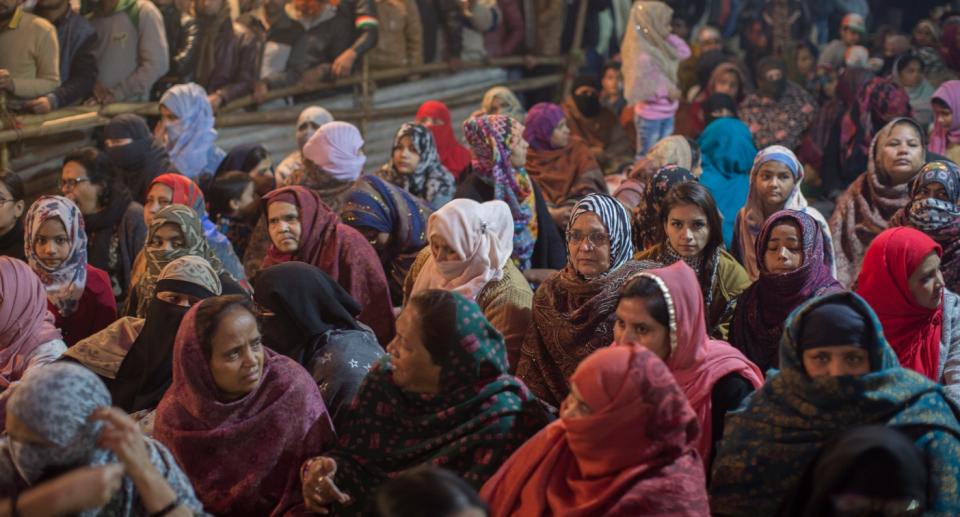Why the Shaheen Bagh shooter’s link to AAP is sinister

In his speech on February 3, Prime Minister Narendra Modi referred to Shaheen Bagh as a ‘political experiment’. Although the signs of this being the case had been unravelling through the duration of the protest, the insidious political plan that was underfoot was yet to be fully revealed.
A few minutes before I was to participate in a television debate on the Delhi elections on Tuesday, it was revealed that the gunman nabbed from Shaheen Bagh, who when being taken into custody made some rankly communal statement, was an Aam Aadmi Party (AAP) member.
It was an astounding revelation because as soon as the incident took place, the usual recriminations of ‘Hindu terror’ and the Bharatiya Janata Party (BJP) hand behind the shooter were made.
There was little space given to investigation: such was the rush to assign blame and create a narrative of the BJP fanning ‘Hindu terror’ that a predictable volley of accusations and lamentations were released.
With this revelation the communal and partisan stance of those who claim to be secularists had been busted.
Even more hypocritically, those who had been linking utterances by BJP politicians on the campaign trail to acts of violence in the capital city were now in complete denial of the fact that the shooter Kapil Gujjar was an AAP member and by their own logic of political accountability, AAP was in the dock.
Not only was Kapil a member but there were images of what looked like an induction ceremony into the party by senior AAP leaders that were flashed across news channels. The link was undeniable.
It is completely justified to question politicians on the things they say, after all they have platforms that provide them a voice that is heard, if not heeded, by thousands, even if in the run-up to the elections these statements were made in response to some of the violent sloganeering done at Shaheen Bagh, especially by children against the Prime Minister; as leaders their levels of accountability are pegged at a higher standard.
The Election Commission has taken action because of this accountability.
But what of a party member who acts out violently and in all probability because of a sinister design and mouths statements that are immediately linked to a political party and a religious faith?
The connect-the-dots game was much too obvious.
As Shaheen Bagh protest grew increasingly unpopular amongst the Delhi public because of some of the rhetoric that emerged from it and the inconvenience it was causing to lakhs of commuters, including children and emergency health services, a one-sided election suddenly had a counter issue.
AAP, which had been riding the return wave unencumbered, found itself confronted with an assertive BJP who with its clear stance on the protest was finding resonance and support.
AAP from supporting the protestors started asking them to disband and abandon their protest. Some supporters even going to the extent of saying that the protest might cost the incumbent the election.
Political analysts began speaking of a Hindu consolidation and opinion polls saw the BJP vote share rise from the mid-twenties to the early forties. This was the background noise when Kapil Gujjar rode down to the protest site, fired shots in the air and then readily went into custody, mouthing Hindu supremacist rhetoric.
Open and shut. The outrage followed.
When the attack is viewed in this context, then the counter strategy becomes more evident.
Could this alleged consolidation be turned into an issue that pointed to the radicalisation of the Hindu voter? Thereby shaming Hindus for speaking against these protests as well as intensifying the victimhood of those protesting? The protests despite public assurances from the government were continuing and radical speeches as well as other issues that had nothing to do with CAA were taking centre stage, reducing the public’s interest in the issue and even antagonising them.
The role Kapil Gujjar played in this environment points to a sinister campaign strategy. However, he will have to answer for himself. Was he put up to this act? The conjecture will continue till there is clarity. But whatever may have been his motivation the incident has self combusted.
AAP’s strategic silences and utterances on Shaheen Bagh will find fewer believers. And Kejriwal’s recitation of the Hanuman Chalisa a day before Kapil Gujjar’s AAP links were revealed, will ring less sincere and more planned.
However for now the question remains, has AAP fallen between the two stools or was it the executor of a devious political strategy that has backfired?

 Yahoo Finance
Yahoo Finance 